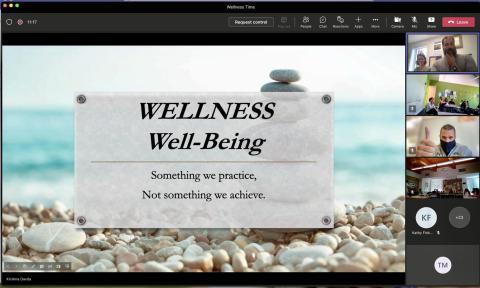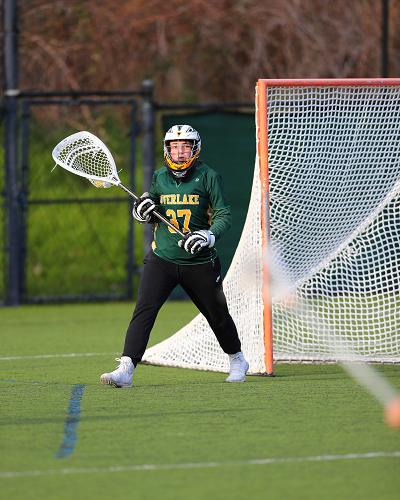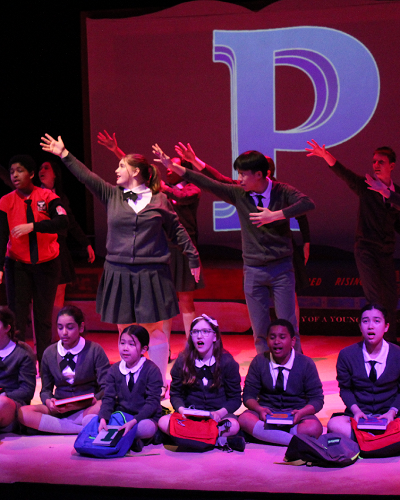A Rhythm of Wellness

Well-being or wellness are words you might have heard a lot in recent years. It’s a pillar of Overlake's newly adopted strategic plan, and now has a permanent spot in the new schedule rotation.
Wellness has always been important at Overlake. From mental health week to the major assignment calendar, the occasional dark day, or study hall, Overlake has continued to try and find ways to teach students beyond academics. Now, with a dedicated time in the schedule, it can be a long-term priority.
On Tuesday, the inaugural day of the seven-day color rotation schedule, Upper School students attended their first wellness time.
The opening slide set the tone for the meeting, reading: ‘Wellness is something we practice. Not something we achieve’. Susan Essex, Director of Student Support, and Krishna Davda, Assistant Head of Upper School, led the session and really drove home the point that these are skills that are important and maybe even things they already know, but this is a chance to put them into practice.
There will be two days where flex time is devoted to wellness, red and orange days. The two days will approach wellness from a corporate and individual perspective. On red days, students will join their homeroom groups and engage in a corporate activity led via teams by the Student Support team or other faculty. “Doing the skill all together helps them practice. We’re looking for systemic and cultural change for the kids to feel well,” says Essex.
On orange days, students will have a ‘wellness menu’ of options where they will get to choose an activity that best helps their well-being on that day. Options might include making up tests they missed from being absent, extra office hours, open gym and Fulton practice rooms, counselor led sessions, or even socializing. The goal is to give students agency over their time to determine what their wellness needs are at a given moment. “Part of self-care is evaluating yourself and deciding what you need. We’re trying to teach students how to use time for life priorities,” Essex says.
In particular, Essex notes that these are skills that will carry students into adulthood. “All the things that wellness covers, executive function, self-care, etc, they’re for our personal lives but also for our professional lives. It’s not just something you practice at home and then come back to us ‘well’,' she says.
Although the wellness time is only for Upper School, the well-being needs of the Middle School are not forgotten. Essex explains that Middle School homeroom time looks different than it does in Upper School and they have a study hall where they already receive support in managing that time. We are always teaching our students to be more and more responsible as they grow, and the wellness menu options in Upper School give students that choice.



